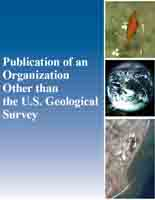Because of its extreme isolation and lack of historical connection to a mainland, the Hawaiian Archipelago is thought to have no native nonvolant terrestrial reptiles. Several squamate species have been introduced to the archipelago, likely starting with early Polynesian contact, and increasing as human traffic in the Pacific has amplified. Of the earlier introductions, one species of skink, Cryptoblepharus poecilopleurus, belongs to a genus known for its ability to naturally disperse long distances, even across oceans. The earliest herpetofaunal surveys from Hawai‘i describe the skink as widespread and abundant across the archipelago. A recent phylogenetic analysis reveals substantial haplotype divergence between Hawaiian individuals and other known populations in the Pacific, raising the possibility that this species was an early and natural arrival to the archipelago before human contact. Recent surveys suggest that the species has undergone a dramatic reduction in range across the archipelago, possibly due to the invasion of highly competitive species. Given this information, we aim to further assess the origin of C. poecilopleurus in Hawai‘i, determine its current range, and suggest specific needs for future work. Here, we review the earliest European voyages in the Pacific that are known to have sampled C. poecilopleurus, review literature and museum specimens to develop an understanding of this species’ history in the islands, survey the island of O‘ahu to characterize its current range, and provide preliminary genetic analyses to show the relationship of the Hawai’i populations to the rest of the Pacific.
On the origin and current distribution of the Oceania Snake-Eyed Skink (Cryptoblepharus poecilopleurus) in the Hawaiian archipelago
Links
- More information: Publisher Index Page (via DOI)
- Download citation as: RIS | Dublin Core
Abstract
Study Area
| Publication type | Article |
|---|---|
| Publication Subtype | Journal Article |
| Title | On the origin and current distribution of the Oceania Snake-Eyed Skink (Cryptoblepharus poecilopleurus) in the Hawaiian archipelago |
| Series title | Pacific Science |
| DOI | 10.2984/77.1.5 |
| Volume | 77 |
| Issue | 1 |
| Year Published | 2023 |
| Language | English |
| Publisher | BioOne |
| Contributing office(s) | Western Ecological Research Center |
| Description | 15 p. |
| First page | 87 |
| Last page | 101 |
| Country | United States |
| State | Hawaii |


